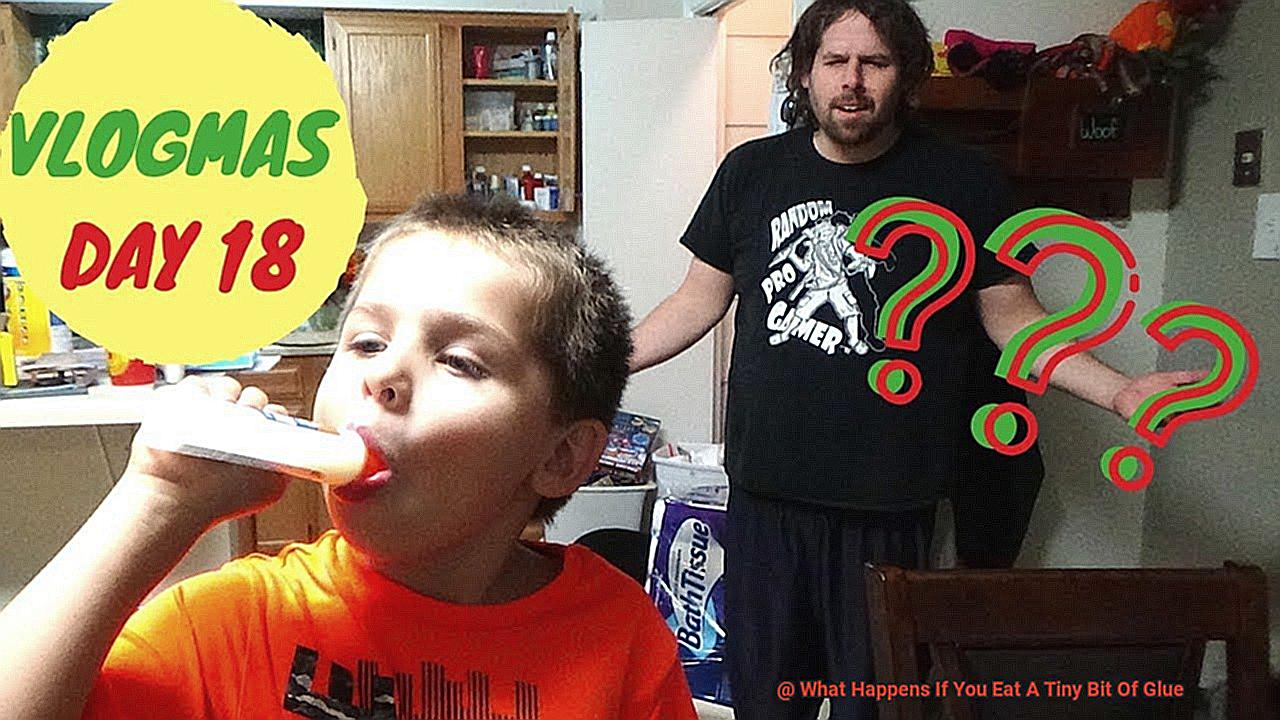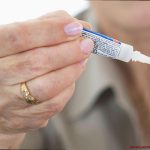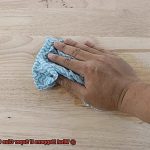Ever wondered what would happen if you took a tiny nibble of glue? It might sound weird, but let’s face it, we’ve all had those moments of curiosity.
Whether you accidentally taste some or decide to take a daredevil bite, it’s important to know the potential health risks involved.
So, buckle up and get ready as we dive into the sticky world of glue ingestion.
What happens if you eat a tiny bit of glue?
Contents
- 1 What happens if you eat a tiny bit of glue?
- 2 What Is Glue?
- 3 What Are the Potential Risks of Eating Glue?
- 4 What Are the Symptoms of Eating Glue?
- 5 How Can Accidental Ingestion of Glue Be Treated?
- 6 What Types of Glue Should Be Avoided?
- 7 How Can We Prevent Accidental Ingestion of Glue?
- 8 What Should You Do If Someone Has Eaten Glue?
- 8.1 Step 1: Stay Calm and Assess the Situation
- 8.2 Step 2: Rinse Their Mouth
- 8.3 Step 3: Avoid Inducing Vomiting
- 8.4 Step 4: Seek Immediate Medical Advice
- 8.5 Step 5: Monitor for Symptoms
- 8.6 Step 6: Refrain from Administering Home Remedies or Medications
- 8.7 Step 7: Monitor or Seek Further Treatment
- 8.8 Step 8: Prevention is Key
- 9 Conclusion
Short-term Effects:
Eating a teensy bit of glue won’t send you straight to the emergency room, but it can still cause some trouble. Commercial glues contain chemicals not meant for internal use, like polyvinyl acetate and other additives. These sneaky substances can irritate your stomach, leading to discomfort, nausea, vomiting, and maybe even a trip to the bathroom that you didn’t sign up for. And watch out if you’re allergic because itching, swelling, or difficulty breathing could crash your glue-eating party.
Long-term Implications:
Here’s where things get serious. Some glues hide toxic ingredients like formaldehyde or toluene in their recipe books. These nasties have been linked to major health issues when consumed in larger amounts. Even small doses over time can cause damage to vital organs like your liver or kidneys. Plus, repeated glue snacking can mess with your body’s ability to absorb nutrients properly and mess up your growth and development – definitely not worth it.
Safety Precautions:
To avoid any sticky situations (pun intended), follow these safety precautions:
- Keep glue out of reach from curious kids by locking them away.
- Stick with glues explicitly labeled as food-grade or edible – don’t risk it.
- If you accidentally munch on some glue, call for backup. Reach out to poison control or seek medical attention ASAP.
- Educate children about the dangers of glue ingestion and encourage them to explore safer ways to satisfy their curiosity.
So, the next time you find yourself wondering about the taste of glue, remember this: it’s best to keep that sticky stuff where it belongs – on your crafts, not in your belly. Stay safe, stay curious, but please, stay away from eating glue.
What Is Glue?
Glue, that sticky wonder, is a ubiquitous substance that binds materials together, making it an indispensable tool in our daily lives. Whether you’re fixing a broken item or unleashing your creativity in art projects, glue plays a vital role in securing the connection between objects. But have you ever pondered what exactly glue is and how it accomplishes its adhesive magic? Join us on a journey to explore the captivating world of glue as we delve into its composition, mechanisms, and safety precautions.
Composition:
Glue comes in various guises – liquid, gel, or solid sticks – and its composition varies depending on its intended use. At its core, glue contains a polymer base that endows it with its remarkable adhesive properties. While animal-derived glues like those made from bones or hides were popular in history, synthetic glues have now taken center stage due to their enhanced performance.
Mechanisms:
The enigmatic prowess of glue lies in its diverse bonding mechanisms. Some glues engage in chemical reactions that trigger the molecules to cross-link, forming robust bonds with the surfaces being joined. Others establish physical bonds through intermolecular forces. These mechanisms ensure a secure and enduring union between materials.
Types:
Glue is no one-trick pony; it comes in an array of types tailored to specific needs. Wood glue, for instance, is specially formulated for bonding wood surfaces and may incorporate additives to bolster bonding strength and moisture resistance. Craft glues offer rapid drying times and flexibility for versatile applications.
Safety Precautions:
While glue is a boon to mankind, responsible usage is paramount. Not all glues are safe for consumption, as some may contain toxic substances or chemicals. Ingesting glue can lead to gastrointestinal discomfort or even more severe symptoms if consumed in larger quantities. To prevent accidental ingestion, it is crucial to read labels, follow instructions, and keep glue out of reach from children.
What Are the Potential Risks of Eating Glue?
Glue may appear harmless, but a closer look reveals potential risks that can have detrimental effects on your health. In this article, we will explore the dangers associated with consuming glue, shedding light on the adverse consequences it can have on your body. So, get ready to peel back the layers of this sticky situation and discover why eating glue is no laughing matter.
Gastrointestinal Irritation:
Consuming glue can irritate the lining of your digestive system due to its chemical components, including polymers, solvents, and additives. This irritation can lead to unpleasant symptoms such as nausea, vomiting, abdominal pain, and diarrhea. It’s like taking a roller coaster ride you definitely want to avoid.

Choking Hazards:
The sticky nature of glue presents a choking hazard when swallowed without proper chewing or in large quantities. Imagine a sticky lump forming in your throat, obstructing your airway. This risk is especially critical for young children who may not have fully developed effective airway clearance mechanisms. Always keep glues out of their reach.
Toxic Substances:
Some glues contain toxic substances like formaldehyde or toluene. These chemicals can wreak havoc on your body when ingested. Formaldehyde, a known carcinogen, can pose long-term health risks if consumed regularly or in high amounts. So remember, glue is for crafts, not for consumption.
Allergic Reactions:
Surprisingly, some individuals are allergic to certain components of glue, such as latex or specific chemical compounds. Ingesting glue can trigger allergic responses like itching, swelling, rashes, or difficulty breathing in susceptible individuals. It’s like playing Russian roulette with your immune system.
Inhalation Risks:
While our focus is on eating glue, it’s essential to mention that inhaling glue fumes can also pose health risks. Glue fumes can irritate your respiratory system, leading to symptoms like dizziness, headaches, and even lung damage over time. Stay safe by avoiding glue fumes altogether.
Types of Glue Matter:
Not all glues are created equal. Some are non-toxic and designed for safe use, while others may contain more hazardous components. Before using any glue, make sure to read the label and choose the appropriate one for your intended purpose. Safety first.
What Are the Symptoms of Eating Glue?
Today, we’re diving into the sticky world of glue consumption and uncovering the potential symptoms that can occur if you accidentally snack on this adhesive concoction. Now, let’s peel back the layers and get to the heart of this pressing question.
Gastrointestinal Distress:
When it comes to ingesting glue, your stomach won’t be too thrilled. Glue contains chemicals that irritate the delicate lining of your digestive tract, leading to tummy turmoil. Symptoms like stomach pain, nausea, vomiting, and diarrhea may make an unwelcome appearance. But fear not, these symptoms are usually temporary and will pass once the glue works its way through your system.
Respiratory Issues:
Inhaling glue fumes is a big no-no, but accidentally swallowing glue emitting toxic fumes can also lead to trouble. If this happens, you might experience difficulty breathing, coughing, or even wheezing. In severe cases, respiratory distress may occur, requiring immediate medical attention. So, let’s keep glue where it belongs – away from our airways.
Allergic Reactions:
Glue isn’t just sticky; it can be quite sneaky too. Some individuals may have sensitive skin or allergies to certain chemicals found in glue. If you’re one of them, brace yourself for potential symptoms like skin rash, itching, swelling, or hives. In extreme cases, breathing difficulties or a racing heartbeat may pop up – definitely not something you want to deal with alone.
Different Strokes for Different Folks:
Not all glues are created equal. Depending on the type and ingredients of the glue you consume, symptoms can vary. Some glues contain solvents or volatile organic compounds that can pose more severe health risks when ingested. So, remember to read those product labels and follow safety guidelines when handling any adhesive.
Seek Medical Attention:
If you find yourself experiencing any symptoms after ingesting glue, don’t hesitate to seek medical help. While mild symptoms may resolve on their own, it’s always better to err on the side of caution. Healthcare professionals can assess the situation and provide appropriate treatment if necessary.
Prevention is Key:
To avoid this sticky situation altogether, keep glue and other potentially harmful substances out of the reach of children. Additionally, read and follow safety instructions when using any adhesive product to minimize the risk of accidental ingestion.
How Can Accidental Ingestion of Glue Be Treated?
Today, we’re delving into a sticky situation – accidental ingestion of glue. Although it may seem unusual, it can happen to anyone, particularly with little ones around. But fear not. We’re here to guide you through the treatment process for this potentially unpleasant scenario. Let’s dive in.
Know your glue:
Understanding the glue you’re dealing with is crucial when it comes to accidental ingestion. Household glues, commonly used for crafts or school projects, are typically non-toxic and water-soluble. In small amounts, they usually pass harmlessly through our digestive system. However, if a large amount is ingested or discomfort is experienced, seeking medical attention is essential.
The danger zone:
Now, let’s discuss more potent glues – industrial-strength adhesives and superglues. These contain chemicals that can be toxic if ingested. They can cause irritation, burning sensations, and tissue damage in the mouth or gastrointestinal tract. Act swiftly. If you accidentally swallow these glues, immediate medical attention is imperative.
Seeking treatment:
When seeking treatment for accidental glue ingestion, provide as much information as possible about the glue ingested. This includes the brand name, packaging ingredients, and any symptoms experienced. This information helps healthcare professionals assess risks and determine the best course of treatment.
First-aid measures:
In certain cases, inducing vomiting may be recommended as a first-aid measure to remove the glue from the stomach. However, never attempt this without guidance from a healthcare professional or poison control center. They will advise on the safest and most effective approach.
Severe cases and interventions:
If the glue has caused significant damage or obstruction in the gastrointestinal tract, more invasive procedures like endoscopy or surgery may be necessary. These interventions help remove any remaining glue and repair any damage caused. Trust your healthcare professional to guide you through this process.
Follow-up care:
After receiving medical treatment, it’s crucial to follow all instructions and recommendations provided. This may include monitoring for ongoing symptoms, taking prescribed medications, and avoiding certain foods or activities until fully recovered. Your health is the top priority.
What Types of Glue Should Be Avoided?
Glue is a versatile tool that serves various purposes, from crafting to fixing broken items. However, it’s crucial to understand that not all glues are safe. Ingesting certain types of glue can have harmful effects on your health. Let’s explore the world of glue safety and identify the types that should be kept out of reach.
Super Glue – A Powerful Bond with Potential Harm:
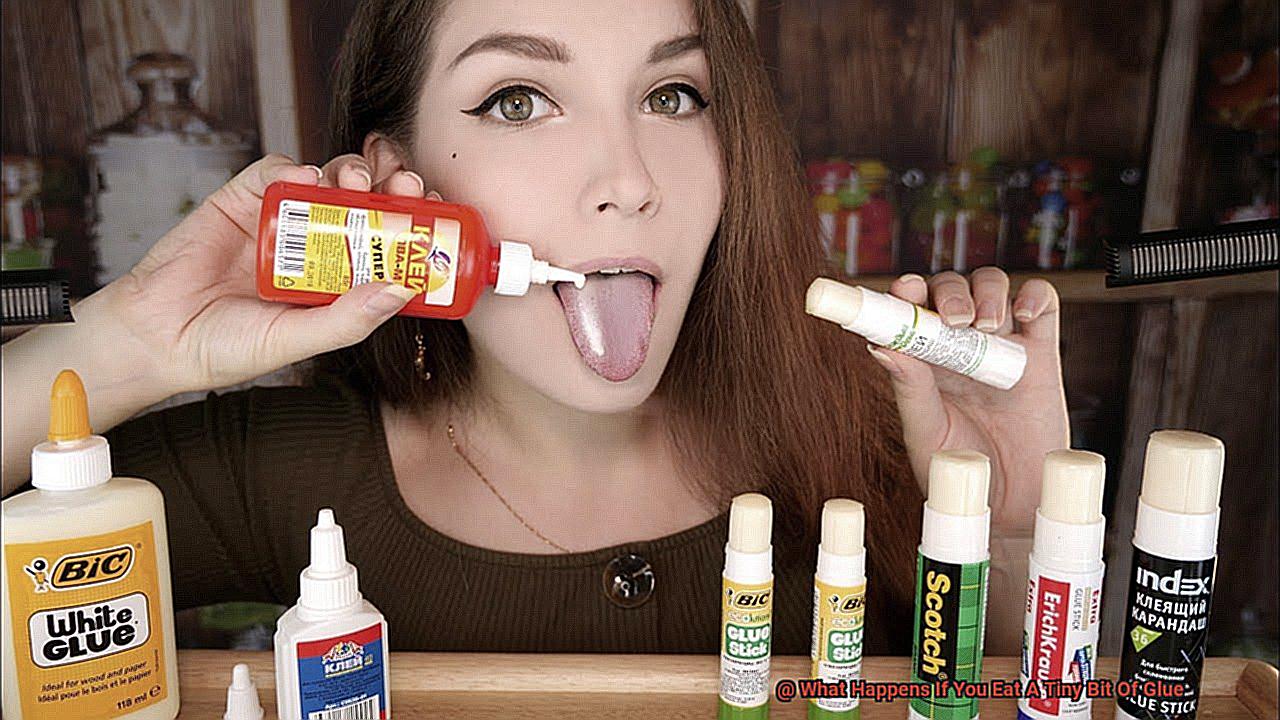
Super glue may seem like a magical adhesive, but it becomes a nightmare if consumed. This glue releases toxic fumes when it comes into contact with moisture in your body. These fumes can wreak havoc on your insides, causing burns and damage to your digestive system. To avoid this sticky situation, it’s best to keep super glue far away from your mouth.
Rubber Cement – Not a Tasty Treat:
Rubber cement contains solvents like acetone and hexane, which are anything but appetizing. Swallowing rubber cement can lead to an unpleasant experience, including nausea, vomiting, and even liver damage in severe cases. Avoid turning rubber cement into an unintended snack and keep it out of your digestive system.
Epoxy Glues – Beware of Harmful Chemicals:
Certain epoxy glues contain chemicals like bisphenol A (BPA) and formaldehyde, which should give you pause before considering them as a food option. BPA has been linked to hormonal imbalances, while formaldehyde is a known cancer-causing substance. It’s best to steer clear of these toxic ingredients and find safer alternatives.
Volatile Organic Compounds (VOCs) – Inhaling Trouble:
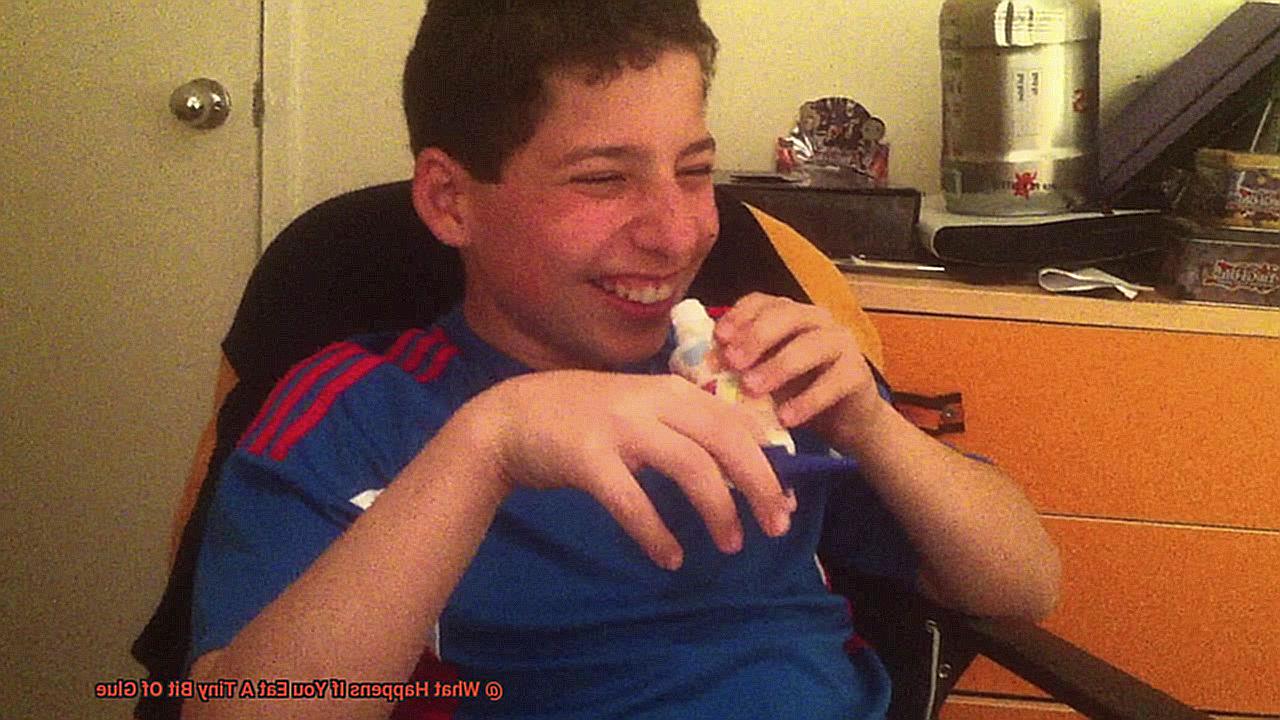
Glues that contain volatile organic compounds (VOCs) can release harmful substances into the air, unbeknownst to you. Breathing in these chemicals can result in respiratory issues and other health problems. To avoid inhaling trouble, opt for glues labeled as low VOC or VOC-free. This way, you can enjoy your crafting projects without compromising your well-being.
Craft Glues – Stick with Non-Toxic Options:
Craft glues, especially those marketed for children, may seem harmless, but appearances can be deceiving. Some of these glues contain tempting ingredients like glitter and small beads that are not meant to be consumed. Before diving into a craft project with your little ones, always read the labels and choose non-toxic glues to prevent any accidental ingestion.
How Can We Prevent Accidental Ingestion of Glue?

In this article, we will delve into practical and effective measures that can be taken to ensure that glue remains out of harm’s way.
Proper Storage:
One of the most basic yet crucial steps in preventing accidental ingestion is proper storage. Store glue in a high cabinet or a locked container, ensuring that it is out of reach for curious little hands and paws. By taking this simple precaution, you can greatly reduce the risk of accidental ingestion. Additionally, remember to tightly seal glue containers when not in use to further minimize any potential risks.
Education:
Teaching children about the dangers of ingesting glue is essential. Engage them in an open conversation about the difference between food and non-food items. Use age-appropriate language and relatable examples to drive home the point that glue is not meant to be eaten and can be harmful if swallowed. By instilling this knowledge early on, you empower children with the understanding necessary to make safer choices.
Supervision:
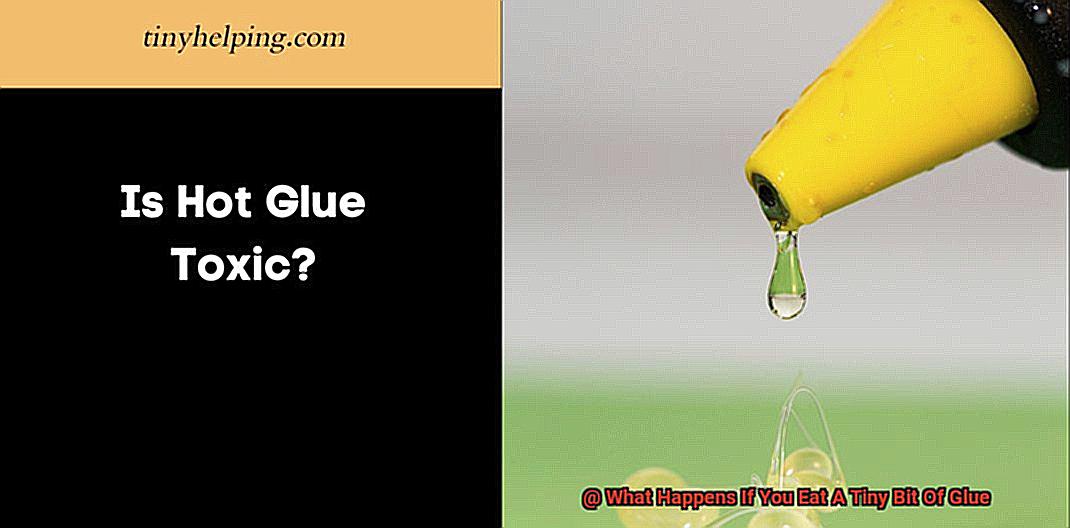
Providing close supervision is key when children engage in craft activities involving glue. Accidents can happen in a split second, so staying vigilant is crucial. By keeping a watchful eye on children while they handle glue, you can prevent them from putting it in their mouths or accidentally ingesting it. Remember, your attentiveness is their safety net.
Safer Alternatives:
Consider opting for non-toxic and washable glues specifically designed for children. These alternatives are formulated with safer ingredients and are less harmful if accidentally ingested. Look for labels indicating their child-friendly nature, providing you with peace of mind while little ones explore their creative side.
Clear Labeling:
Glue containers should have clear and prominent labels stating that the product is not meant to be eaten and can be dangerous if swallowed. Including warning symbols or icons can further enhance the effectiveness of the message, even for those who cannot read yet. By making the warning conspicuous, you ensure that anyone handling the glue is aware of its potential risks.
Proper Disposal:
Dispose of any leftover or unused glue properly by sealing it in containers or bags before throwing it away. This prevents accidental access and ingestion by children or animals who might mistake it for food. By taking this extra step, you eliminate any potential hazards posed by discarded glue.
What Should You Do If Someone Has Eaten Glue?
In the chaos of everyday life, accidents happen. And sometimes, those accidents involve ingesting glue. Whether it’s a curious child or a distracted adult, finding oneself in this sticky situation can be a cause for concern.
In this article, we will provide you with a step-by-step guide on what to do if someone has eaten glue. So take a deep breath, stay calm, and let’s navigate through this gluey predicament together.
Step 1: Stay Calm and Assess the Situation
When you discover that someone has ingested glue, it’s important to remain calm. Take a moment to evaluate the person and look for any immediate signs of distress or allergic reactions. If they appear fine, proceed to the next step.
Step 2: Rinse Their Mouth
To minimize potential irritation and remove any remaining glue residue, have the person rinse their mouth thoroughly with water. This simple step can help ensure that no glue remains in their digestive system.
Step 3: Avoid Inducing Vomiting
While tempting to induce vomiting as a quick solution, it’s best to avoid this course of action. For certain types of glue, inducing vomiting can cause further damage to the digestive system and may not be necessary.
Step 4: Seek Immediate Medical Advice
Contact a medical professional or poison control center right away for further guidance. These experts are equipped to provide specific instructions based on the type of glue ingested and the individual’s condition. Time is of the essence, so don’t hesitate to reach out for professional assistance.
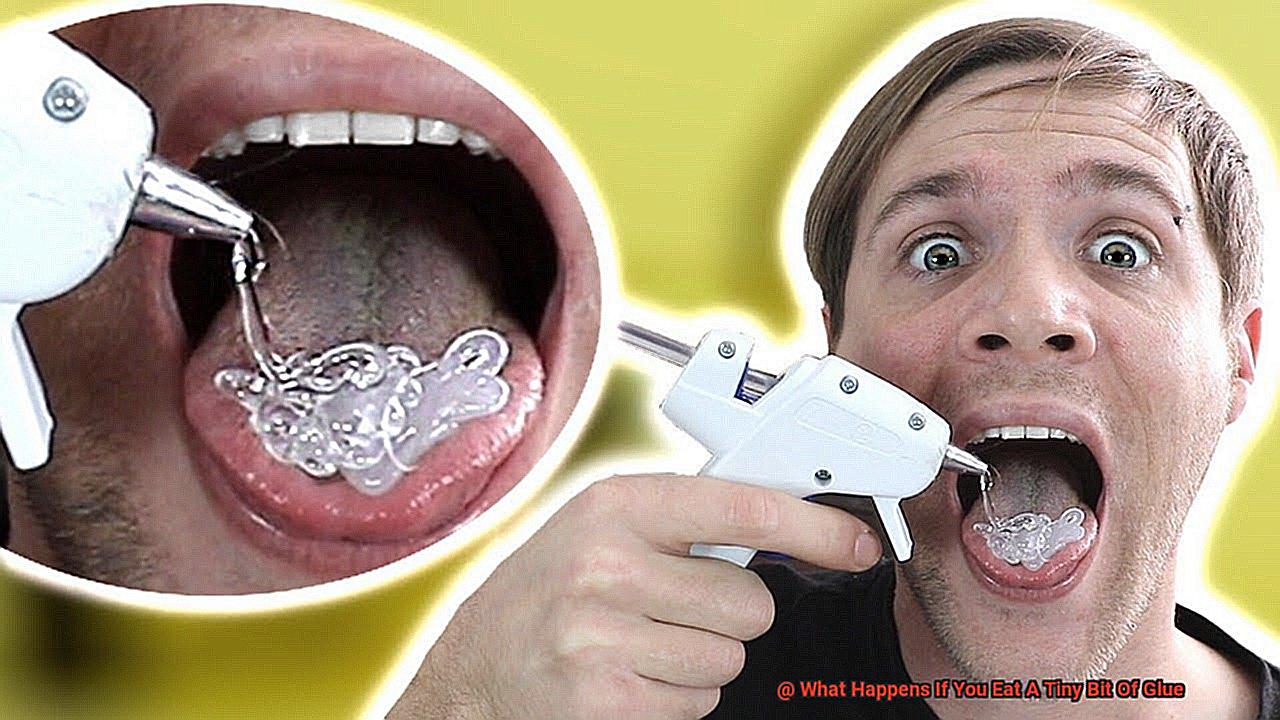
Step 5: Monitor for Symptoms
While waiting for medical advice, keep a vigilant eye on the person for any developing symptoms. Watch out for difficulty breathing, throat swelling, or severe abdominal pain. If any of these symptoms occur, do not hesitate to call emergency services immediately.
Step 6: Refrain from Administering Home Remedies or Medications
It’s crucial to resist the urge to administer any home remedies or medications without professional advice. Doing so could potentially worsen the situation and delay appropriate medical treatment.
Step 7: Monitor or Seek Further Treatment
Depending on the severity of the situation, medical professionals may recommend monitoring the person closely or bringing them in for evaluation and further treatment. Follow their advice diligently to ensure the best possible outcome.
Step 8: Prevention is Key
To avoid future incidents, take proactive measures to keep glue and other potentially harmful substances out of reach. Store them safely away from children and anyone who may accidentally ingest them. Remember, education and supervision play vital roles in minimizing the risk of glue mishaps.
KxCBENKD9XQ” >
Also Read: Is Hot Glue Toxic? – Glue Things
Conclusion
Eating a tiny bit of glue may seem harmless, but it’s important to understand the potential consequences.
When glue enters your digestive system, it can cause irritation and discomfort. The chemicals in the glue may also disrupt the natural balance of your gut, leading to digestive issues.
In some cases, glue can even block or damage your intestines, requiring medical intervention. It’s crucial to remember that glue is not meant for consumption and should be kept away from your mouth at all times.
If you accidentally ingest glue, seek medical advice immediately to ensure your safety and well-being.

